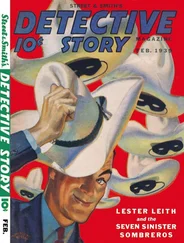Array Dinks - The Dog
Здесь есть возможность читать онлайн «Array Dinks - The Dog» — ознакомительный отрывок электронной книги совершенно бесплатно, а после прочтения отрывка купить полную версию. В некоторых случаях можно слушать аудио, скачать через торрент в формате fb2 и присутствует краткое содержание. Жанр: Домашние животные, foreign_antique, foreign_prose, на английском языке. Описание произведения, (предисловие) а так же отзывы посетителей доступны на портале библиотеки ЛибКат.
- Название:The Dog
- Автор:
- Жанр:
- Год:неизвестен
- ISBN:нет данных
- Рейтинг книги:5 / 5. Голосов: 1
-
Избранное:Добавить в избранное
- Отзывы:
-
Ваша оценка:
- 100
- 1
- 2
- 3
- 4
- 5
The Dog: краткое содержание, описание и аннотация
Предлагаем к чтению аннотацию, описание, краткое содержание или предисловие (зависит от того, что написал сам автор книги «The Dog»). Если вы не нашли необходимую информацию о книге — напишите в комментариях, мы постараемся отыскать её.
The Dog — читать онлайн ознакомительный отрывок
Ниже представлен текст книги, разбитый по страницам. Система сохранения места последней прочитанной страницы, позволяет с удобством читать онлайн бесплатно книгу «The Dog», без необходимости каждый раз заново искать на чём Вы остановились. Поставьте закладку, и сможете в любой момент перейти на страницу, на которой закончили чтение.
Интервал:
Закладка:
A pustular eruption is often witnessed during the existence of distemper, and I have not seen the same phenomenon distinct from the disease. The two appear to be united, and yet we do not know the manner in which they are connected. The other symptoms are not mitigated when the pustules are matured, nor does their appearance denote any particular crisis or stage of the disorder. I have, however, most frequently seen them towards the latter or confirmed stages of distemper, and often they have immediately preceded the fits. The first indication given is a little redness, which is strictly local or confined to a particular spot. This place is not very red, but, nevertheless, it is obviously inflamed and tender; there is not much swelling, but a slight hardness can be detected. A day or two afterwards the redness dies away, and a globular eminence, perfectly round, and generally about the size of a split pea, is beheld. If it be opened, a proportionate quantity of thick pus of a healthy character escapes, and a comparatively large incrustation forms over the part; if not opened, the pustule bursts and the scab follows, but larger than in the previous case. Mostly the eruption appears on the belly and inside of the thighs, but it is seldom strictly confined to those parts. Often it affects the trunk and tail, but does not usually attack the head and fore-limbs. There is no proof that any benefit attends its development, or any known reason for attributing it to any cause; save only such as can be drawn from the statement, that I have commonly observed it in pups of a weakly constitution and emaciated condition.
The disposition to eat or gnaw some part of the body is often shown to an alarming degree, but is seldom exhibited save in the latter stage of the disease. The dog is observed to lick one of its paws, or mumble at its tail, for some days. The part is always one of the extremities, and is evidently tormented with a violent itching which cannot be allayed. The animal at length, irritated by the torture, attacks the member with its teeth. The skin is first removed, and then the flesh. The mouth may be covered with blood, the teeth clogged with hair, and the very bones attacked; but the pain which the sight of the mangled surface suggests to the spectator seems not to be felt by the dog, which appears desirous only of destroying its own body. I have known two of the toes of one fore-paw to be thus consumed, so that amputation was afterward imperative, portions of the metacarpal bones being laid bare. In several instances the root of the tail has been eaten, until the sacrum and first tail bones, with the nerves, were exposed. The rage cannot be overcome, and, unless the disposition be prevented by mechanical means, the consequence will be fatal. No author that I am acquainted with has noticed this peculiarity; and in general it is attributed to other causes than distemper, which is either not observed, or is supposed to have been got over.
Tumors on various parts of the body, and of different kinds, sometimes but not usually accompany the disease; but as I have not been able to satisfy myself they are peculiar to the disorder, or induced by any other cause than the debility attendant on distemper, there is in this place no occasion to more than point out the possibility of their appearance. They are unfavorable as indications of general weakness, but they do not seem to possess any further or direct influence over the course of the affection.
The genital organs rarely escape altogether. A thick purulent discharge, or one of a glairy nature, is often present in the male throughout the attack, and nearly always during recovery. In both sexes the bladder in the latter stages is apt to be paralysed, and the accumulation of the urine then becomes a prominent symptom. The recovery often commences after relief has been obtained, but if the necessity be overlooked, death generally ensues.
Paralysis of the hind extremities is occasionally witnessed, and when seen is generally sudden in its appearance. Sometimes, however, the loss of power is gradual, and when such is the case the hopes of a cure are always diminished. If the power of motion be lost suddenly, costiveness mostly exists; and if, on the other hand, it should be gradual, there may be diarrhœa, which will terminate in death.
Twitches, choræa, or Saint Vitus's dance, are not very usual, and may continue for months after every other symptom has subsided. All four limbs are sometimes violently agitated, and even during sleep are not quiescent. The motion is incessant, and when this is the case the animal dies, worn out by the want of bodily rest. In the majority of instances only one limb is affected; and a species of independence of volition, or incapability of controlling its movements, accompanies the affection. Though never still, the leg is comparatively useless, and is carried in a manner which denotes this fact. The muscles of the trunk are less commonly attacked, but they do not always escape. When the legs have not been thus affected, I have known the abdominal and thoracic muscles to be troubled by continuous twitchings; which, however, have been for the most part slight, and have subsided more quickly than have those of the extremities, when they have been diseased. Cholera comes on gradually; its commencement is hardly to be perceived, and it is seldom observed before the distemper is fully developed – even sometimes only when the disorder appears to be subsiding. It is not rare for it to start up while the animal is apparently recovering; and when it does so, it is always most difficult to remove. No pain is felt in the affected limb; the part rather seems to lose some portion of its sensibility.
When the hind parts are paralysed, feeling may be entirely gone; so that a pin thrust into the flesh of those parts does not even attract the notice of the dog. This does not occur in choræa, but the consciousness is dulled by that affection. The convulsed limb may be more roughly handled than the healthy ones; but violence will excite those answers which truly indicate that insensibility is not established in it. If nothing be done for the twitchings, the limb will waste; at last the general system will be sympathetically involved, and the body will grow thin. This, however, may not happen until long after all signs of distemper have disappeared; for choræa, though well known to be often fatal, is always slow in its progress, and never attended with immediate danger.
Such is an outline of the leading symptoms; and it now remains only to more particularly point out those which indicate death and denote recovery. The third or fourth week is the time when the dog mostly dies, if the disorder terminates fatally; and six weeks is the average continuance of the attack. Rapid loss of flesh is always a bad sign, and it is worse in proportion as the appetite is good, because then nature has lost the power of appropriation. The presence of vermin is likewise a circumstance which in some measure is deserving of notice. If a dog becomes, during the existence of this disorder, unusually infested with fleas, or more especially if lice all at once cover its coat, – as these parasites ever abound where the body is debilitated and the system unhealthy, – they are at such a period particularly ominous. The coat cannot, while the disease prevails, be expected to look sleek; but when it becomes more than usually harsh, and is decidedly foul, having a peculiar smell, which is communicated to the hand when it is passed over the body, the anticipations are not bright. The most marked indication is, however, given by the tongue. When this is only a little whiter than it was in health, we may hope for recovery; but if it becomes coated, discolored, and red and dry at its tip and edges, the worst may be foretold. The warning is the more decided if the breath be hot and tainted, and the belly and feet cold to the touch. While the dog can stand and walk, however feebly, there is no reason to despair; but when it falls down, and lies upon its side, rarely is medicine of much avail. Even then, however, it will sometimes recover; but if, while in this state, injections are returned as soon as they are administered, the chance that it can survive is indeed remote.
Читать дальшеИнтервал:
Закладка:
Похожие книги на «The Dog»
Представляем Вашему вниманию похожие книги на «The Dog» списком для выбора. Мы отобрали схожую по названию и смыслу литературу в надежде предоставить читателям больше вариантов отыскать новые, интересные, ещё непрочитанные произведения.
Обсуждение, отзывы о книге «The Dog» и просто собственные мнения читателей. Оставьте ваши комментарии, напишите, что Вы думаете о произведении, его смысле или главных героях. Укажите что конкретно понравилось, а что нет, и почему Вы так считаете.











